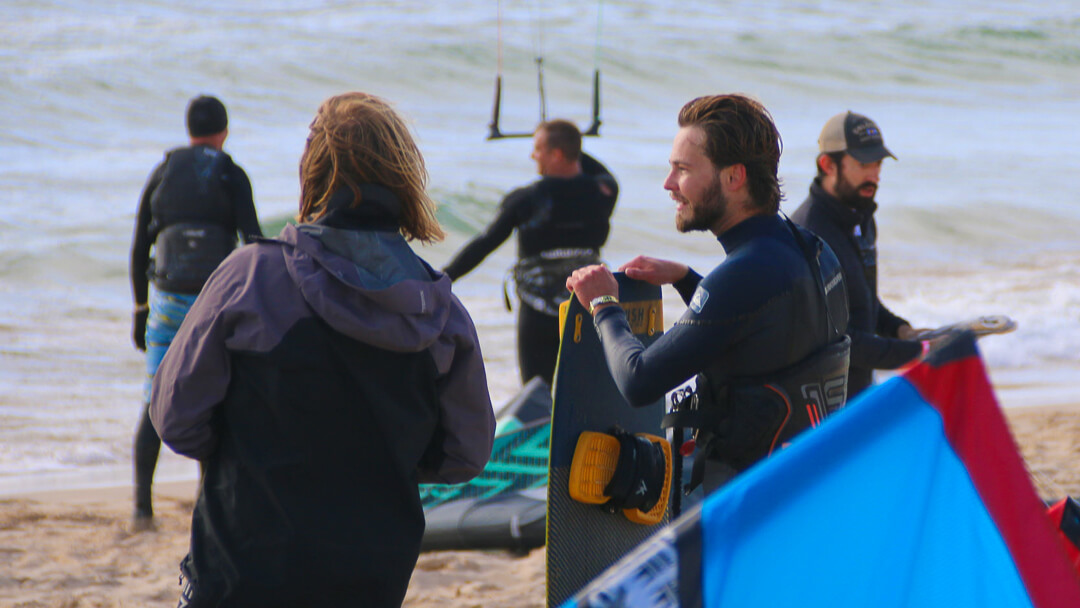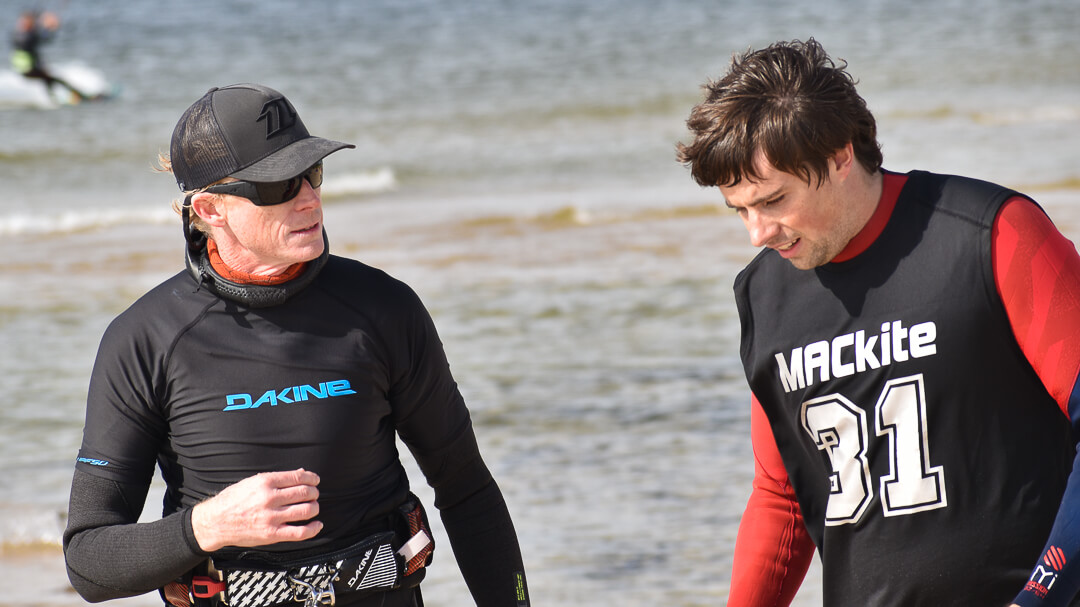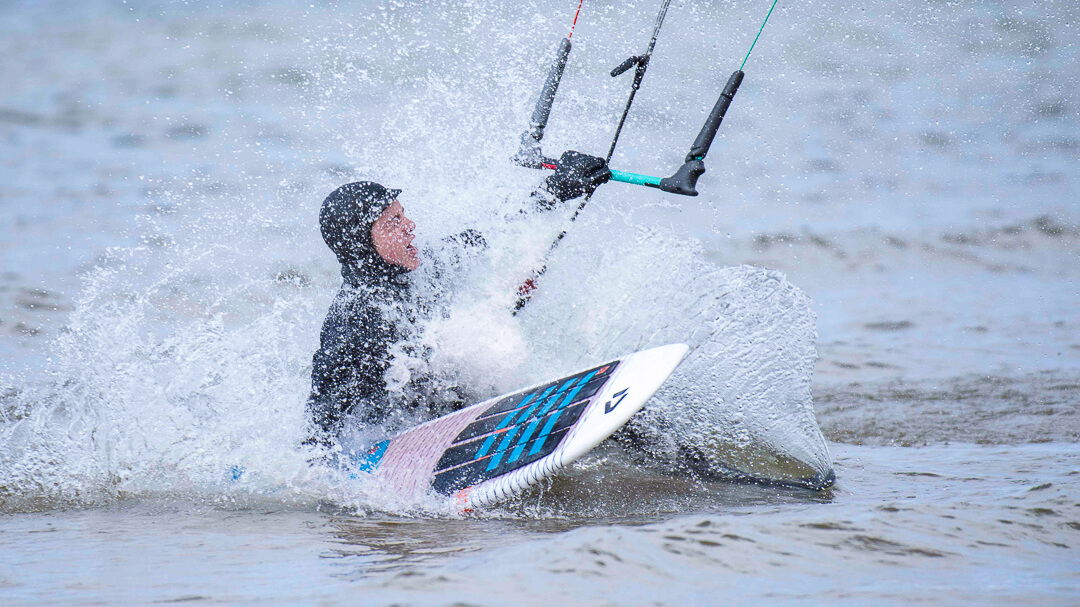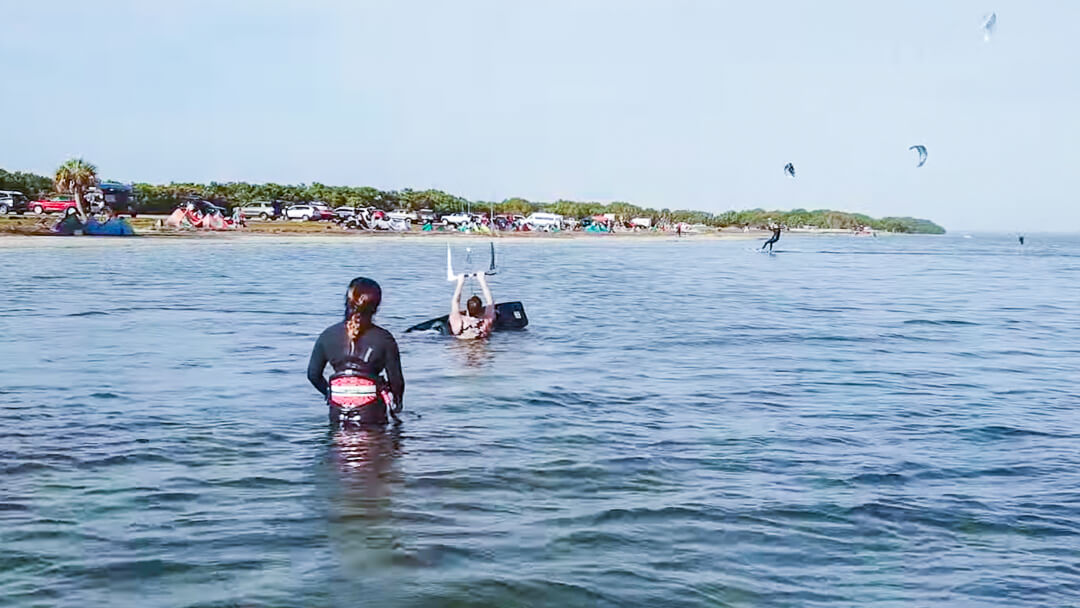30 Days From Clueless Observer to Confident Beginner Kiteboarder

Getting Hooked On Kiteboarding
Whether you hit the beach one day and saw some crazy kiteboarders flying in the air on a windy day, or you saw Kevin Langeree’s 28.3-meter jump in an Instagram video, you’ve somehow been introduced to kiting, and now you’re hooked.
You’ve done your research, watched youtube videos, bought all your gear, and are ready to hit the water (with either an experienced kiteboarder or instructor, of course). The wind is cranking 25 knots, and you can see the sand blowing over your toes at the beach. Suddenly, all that excitement that once was, has turned into nervousness.
But alas, you’ve come this far—it’s time to pump up your kite.

Taking Your First Kiteboarding Lesson
Your first day flying the kite should be nothing more than standing on the beach and simply flying it. Trying to understand how it will respond to your control bar movements. Your instructor should be helping you along the way, explaining the basics of how to maneuver your control bar. After a few hours of learning to control your kite, you’ve developed some confidence.

3 Essential Kiteboarding Skills to Remember
Ready to get the board on your feet? Not so fast! There are a few more things you should learn first.
Self rescues, relaunching your kite, and body dragging are all crucial skills to making sure you can hit the water with maximum confidence and knowledge. After all, when you’re attached to a giant kite that has the ability to toss you like a ragdoll over wavy, choppy waters, there are a few things that can go wrong.
Relaunching is when your kite falls out of the sky, and you just need to maneuver the control bar to get it back up in the air.
Body-dragging is when you lose your board and need to drag around the water looking for it, or back to the beach if you can’t find it.
Self-rescues are when you can’t relaunch your kite due to lack of wind or a line tangling issue, and need to reel in your lines to get back to your kite so you can swim back to shore.
Remember those three things.

After you and your instructor have gone over self rescues, relaunching, and body-dragging (which should’ve been multiple hours worth of practice), you’re finally ready to get the board on your feet, for real this time.
You sit in the water, board on your feet, head above water, and eyes on your kite. You make that first big “dip” in your kite, and boom, just like that, you’re up and riding. You’re so excited you don’t even pay attention to the fact that you’re getting pulled downwind! Don’t worry, your instructor will anticipate this and meet you down the beach. For now, just enjoy the ride. Make sure you are also paying as much attention to the kite as possible and are constantly controlling it to make sure it doesn’t fall out of the sky. If it does, don’t panic, this is why we practiced relaunching, body dragging, and self rescues.
Eventually, after hours of practice, kite control will become easy, and the kite will just feel like an extended limb on your body.
I hope this gave you an idea of what the process is like for learning to kiteboard from a beginner's perspective. It’s a long process, but it’s all worth it for a sport that will keep you stoked for life.
Feel free to reach out to us at MACKite via email or phone for any questions.
By Cado
(beginner kiteboarder, 6 months of experience)
Highlights and Takeaways:
- Find inspiration and get involved
- Take a kiteboarding lesson
- Remember relaunching, body-dragging, and self-rescue
Related Links:
Subscription Links:
Click Below to Contact Us:

Recent Posts
-
Kiteboarding | Crafting the Harlem Force Kite with Sustainability and Performance
Unparalleled Performance Meets Unmatched Sustainability The kiteboarding industry is on …24th Apr 2024 -
Duotone Ventis 2025 | What's New?
If you're familiar with Duotone's Ventis, you know its specialty is freeriding in light wind …23rd Apr 2024 -
Duotone Ventis D/LAB 2025 Overview
If you ride in an area with multiple light wind days and need a wing that'll let you get o …23rd Apr 2024




